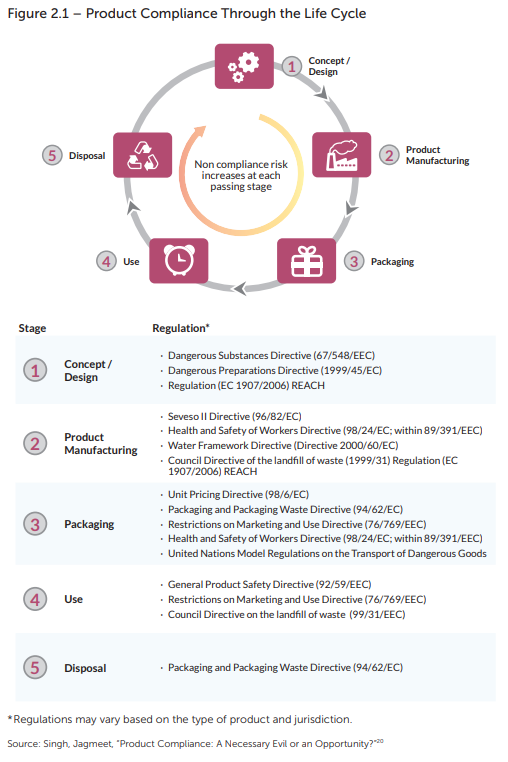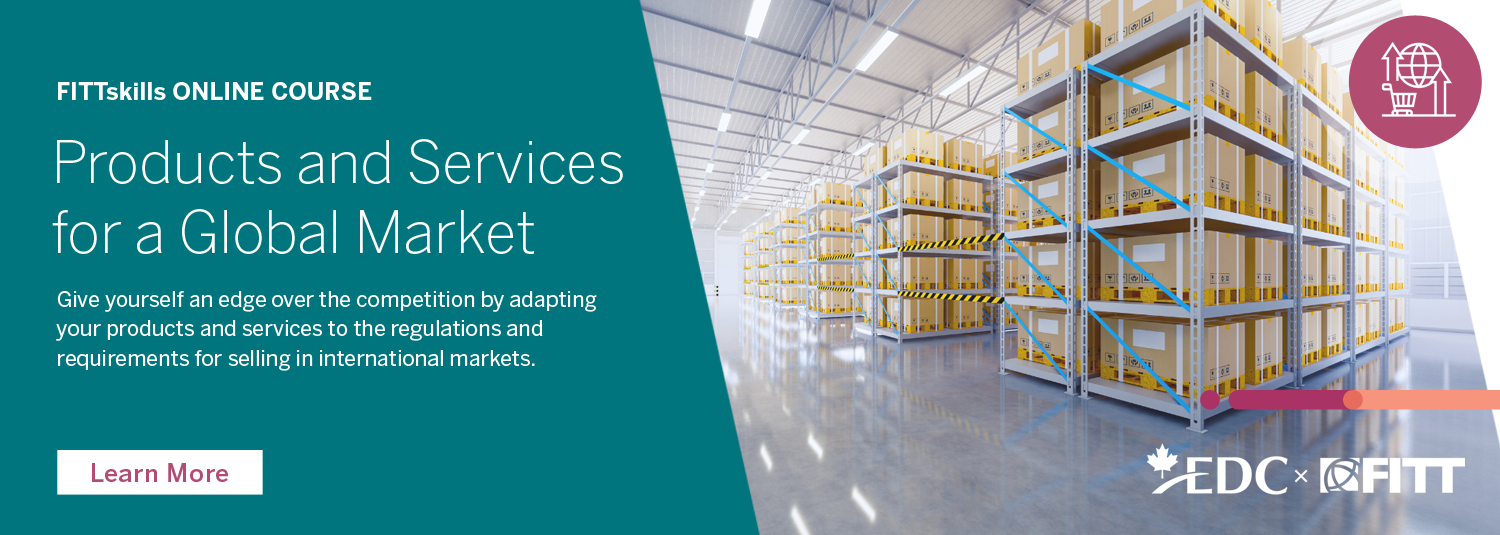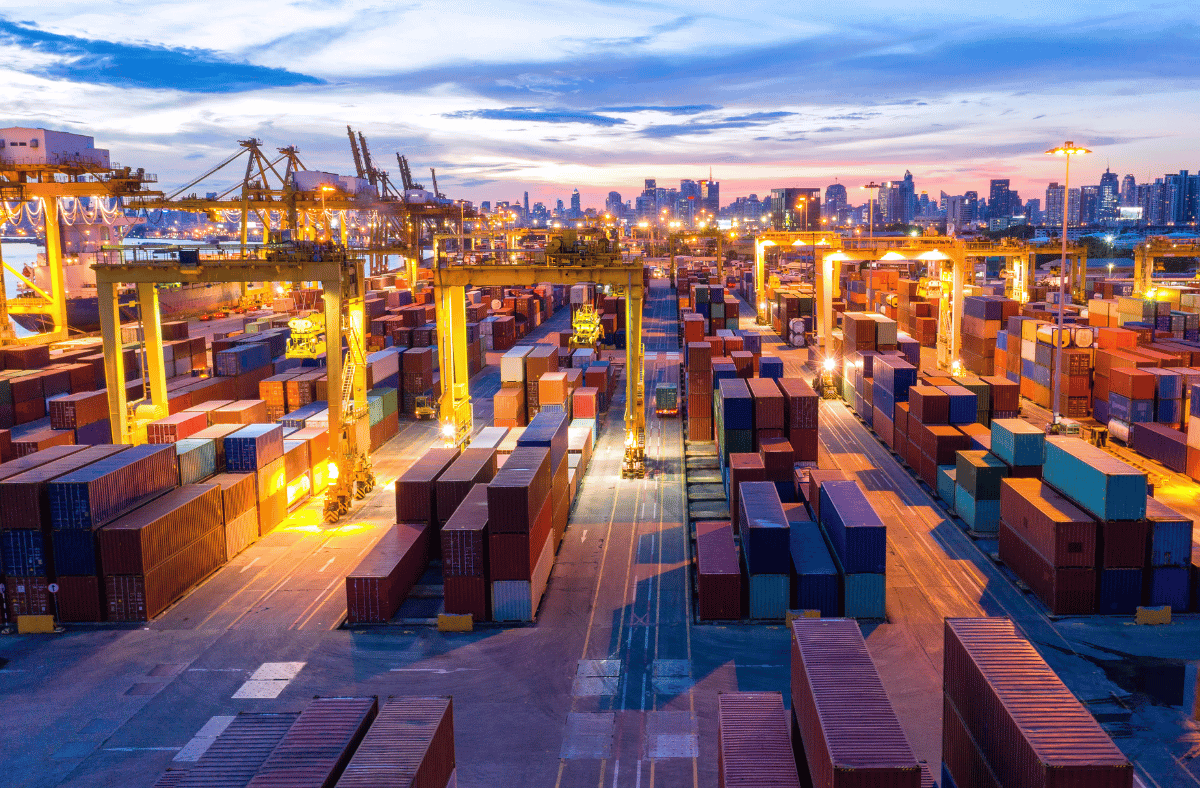
Product compliance is a constantly evolving process. Because laws, standards and regulation continuously change, manufacturers, retailers and suppliers are pressed to innovate quickly in order to create compliant products and substances. Whether an organization manufactures the product or resells it, the responsibility to comply makes the manufacturer, suppliers and the reseller legally accountable.
The role of product compliance increases in scenarios of product proliferation, complex supply chains and multiple markets. With a recent increase in compliance-related penalties, fines and recalls, there is no room for non-compliance. The challenge for your company lies not only in producing a compliant product, but also in declaring it as compliant by placing it on store shelves.
Legal issues and risks—particularly product liability—are increased by production activities in multiple foreign markets, off-shore manufacturing and off-shore contracts. Some of these legal risks can be mitigated through regulatory compliance and meeting product standards.
What is Product Compliance?
In the simplest terms, product compliance means adhering to all the regulatory requirements and standards that products and services need to meet to be lawfully marketed in a given jurisdiction. These requirements vary depending on the product and the market, covering areas such as electrical safety, chemical composition, and children’s safety, to name a few. Compliance can be a complex area with multiple laws and regulations for suppliers and buyers to consider. Regulatory authorities ensure that products and substances are in compliance and can authorize regulatory approval.
It’s important as a manufacturer or distributor to have a comprehensive understanding of the different aspects of product compliance to avoid costly mistakes. Since different laws regulate various aspects of products, manufacturers need to understand not just one regulation, but possibly multiple regulations to bring their products to market in a compliant way.
Regulatory Compliance
Manufacturing compliance is comprised of technical, legal and corporate requirements, as well as regulations and practices manufacturers must comply with in order to produce and market products.
The risk of non-compliance has become an increasingly major concern in recent years, particularly for manufacturers with operations in multiple countries and jurisdictions that have their own compliance requirements.
This development has been further heightened by the increasing role of governmental regulatory bodies in certain industry sectors, along with the emergence of global standards to address the increasingly global nature of manufacturing. Regulatory compliance can impact every stage of the manufacturing process from product design to the end product.
Product Safety Compliance
Product safety compliance requires products to conform to regulations that ensure the product does not harm consumers, property or the environment throughout the product life cycle from inception to disposal. Regulations govern product concept/design, manufacturing, labelling, packaging, use and disposal (see Figure 2 1)
Safety regulations can cover the characteristics of a product, as well as its technical specifications, safety features, functionality, quality and durability. Product safety regulations may also apply to production processes, such as the way in which a product is manufactured. These regulations can also apply to the product life cycle, including how returns and disposals are managed, illustrated below.

Product Labeling Regulations
Many countries also have labeling requirements covering the use of their official language(s) and the types of information that should be included on a product label. The labeling of goods refers to information that must be provided on the product itself or the package in which it is sold. A product meets standards when it includes all the necessary information.
Labels provide two kinds of information about the product: that required by law and that provided by the manufacturer. The latter is also subject to the law, in that regulations in all countries state what must appear on products of various types and what cannot appear.
For example, a manufacturer cannot make false claims about the product or its uses on the packaging. Products can be subject to testing and inspection if false claims are suspected to ensure that they comply with labeling requirements..
The type of information required by law varies from country to country, and often from one local or state jurisdiction to another within countries. This information can change and is usually the responsibility of several government departments.
Depending on the country and the type of product, manufacturers must comply with labeling regulations concerning the provision of basic information about the product and its manufacturer or importer, as well as safety, health, protection of the environment or protection of consumers against misrepresentation and fraud.
For example, companies that produce food, beverages and/or health supplements generally face strict regulations for any health-related claims. In some countries, a company may be able to say a particular supplement is “immune boosting”, while in other countries the company may only be able to say that it “supports immune health”, or it might be restricted completely from making any health claims at all.
Normally, importers must provide the exporter with all of the relevant compliance information and labeling requirements. This might mean that an exporting manufacturer will be provided with different labels to affix to its product, or it might be provided with samples to use as printing templates.
Labeling requirements might also include product tracing information, such as barcodes or Radio Frequency Identification (RFID) tags, and other supplier tracking information depending on the type of product, distribution channels and jurisdiction.
Want to learn more about regulatory compliance and getting your products ready for global markets? Check out the FITTskills Products & Services for a Global Market online course.
Product Packaging Regulations
Most countries have rules governing how goods and substances are to be packaged in order to preserve, protect, display, store or transport them. Packaging refers to the material (wrappers, cartons and boxes) that cover or contain the individual product.
In terms of packaging, manufacturers must ensure products are presented attractively and that the packaging meets the regulatory requirements of the country where the goods will be marketed. This is important for products that could present a risk, such as over-the-counter medications or chemicals, where tamper-proof and child-resistant packaging signifies the integrity of the product and concern for the health and safety of the consumer.
Pre-packaged consumer products and substances must usually meet the following packaging requirements:
- Fill level: Packages must be filled so that a consumer can reasonably determine the quantity of product they contain.
- Package design and display: Packages must be manufactured, constructed or displayed in a way that a consumer can reasonably determine the quality or quantity of product they contain.
- Standard package size: Certain food and non-food pre-packaged products must be packaged in standard-size containers.
- Environmental sustainability and disposal: Companies are under pressure by consumers demanding environmentally responsible packaging that is recyclable, reusable and meets requirements for safe disposal.
Key information sources on foreign packaging requirements include a country’s department of foreign affairs, foreign diplomatic representatives, industry associations and foreign manufacturers’ agents.
It is essential to ensure product compliance with regulations. Failure to do so could result in confiscation of goods, fines, criminal litigation or legal liability for damage and injury. However, no single set of regulatory guidelines covers all products and all countries.
Each company must research the regulations that apply to its products within its target markets, and ensure that its products, production processes and packaging comply with those requirements.
Many industries also have voluntary industry standards and best practices for packaging that often exceed regulatory expectations to reassure consumers and the general public with respect to the safety and integrity of that industry.







disqus comments